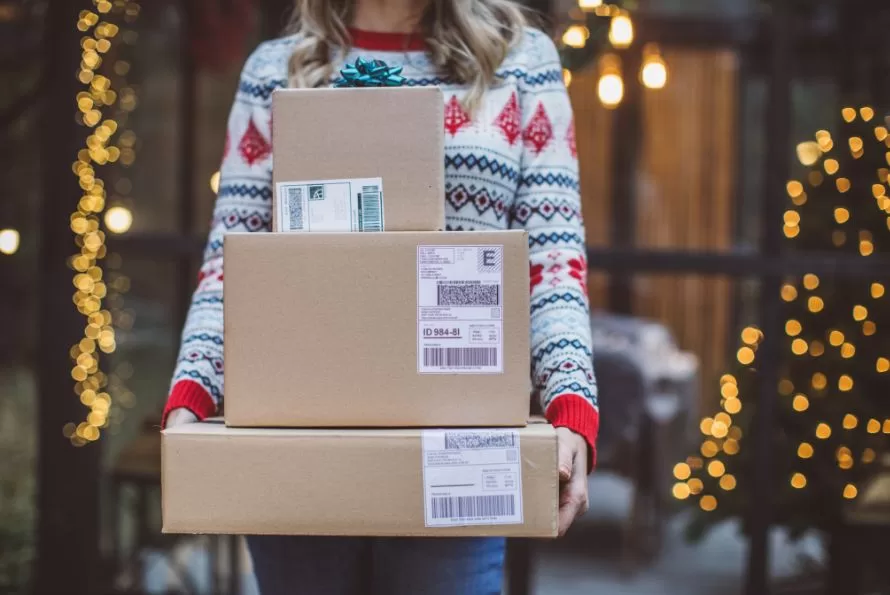

Cyber Holiday Exceeds Expectations Despite Uncertain Economy

Cautious consumers and an uncertain economy led to reduced growth projections this holiday season, with Deloitte forecasting that U.S. retail sales would only grow 4-6% and ACI Worldwide predicting global e-commerce transactions to increase 10% between Thanksgiving and Cyber Monday. According to Bankrate, 25% of shoppers began their holiday shopping in August and September and another 25% began in October. Consumers were searching for gifts and deals immediately after the Back-to-School season slowed down.
While many analysts expected a slower “Cyber 5” (The five days from Thanksgiving to Cyber Monday) because of early shopping behavior, performance ended up exceeding expectations significantly.
Cyber 5 racks up revenue for brands
Despite initial reports projecting sales to not increase significantly (if at all) during this season due to consumer shopping happening much earlier than in past years, brands still exceeded expectations during this e-commerce holiday season. Salesforce saw a remarkable $281 billion in global online sales during Cyber Week, a 2% increase in sales from 2021. In the U.S., sales were up 9% compared to the year before.
Discount rates spiked significantly during Cyber Week, topping pre-pandemic levels at 27% globally and 30% in the U.S., with general apparel averaging a 34% discount, makeup and skincare at 32%, and luxury handbags and apparel at 26%. It’s clear consumers patiently waited for discounts and leveraged buy now, pay later (BNPL) expense methods, with eMarketer reporting an 85% increase in BNPL orders compared to the previous week.
While there are still some discrepancies between Cyber Week results (including Adobe Analytics reporting e-commerce sales rose 4%, and sales from November 1st-28th were up 8.7% compared to last year), the data is still showing a much more positive story for the 2022 holiday season than brands had previously hoped to achieve.
Acceleration Partners’ clients experience high conversion rates and sales
At Acceleration Partners (AP), our clients saw a 3.2% increase in revenue from Cyber 5, and an increase in conversion rates by 4.7% year-over-year (YoY). During November 1st-28th, revenue for AP clients was up 12% YoY, with some notable affiliate revenue YoY increases:
- 78% for food and beverage
- 55% for household goods
- 34% for apparel
October saw even stronger results with revenue increasing 27%, which was primarily driven by loyalty partners (up 52% YoY) and deal partners (up 56% YoY).
We expected our affiliate partners to help our clients drive sales this holiday season, as 51% of U.S. consumers said they were planning on using voucher sites and 80% of U.S. consumers affiliated with at least one loyalty program. Our account teams also recommended clients push forward their promotions and discounts, since 50% of consumers started shopping earlier.
Many of our predictions came true, and thanks to AP’s unique ability to easily pivot plans to work with a variety of partners to target different audiences, we delivered a successful holiday shopping season for many of our clients.
Keep the momentum going
While Cyber 5 might be over, the massive success from this e-commerce holiday doesn’t have to end here. As we wrap up 2022 and the last holiday sales, consider the following three insights and how your brand can leverage them in your partnership program to finish this year on a high note.
- Flexible payment options are going to continue to be a priority globally. Consumers will continue to look for ways to spread out payments and budget accordingly, as the economy is still affecting consumer behavior. This was evident Cyber Week, when BNPL orders increased by 85% and Afterpay saw transactions rise by 120%. For brands wanting to target cautious consumers, offering payment flexibility through BNPL partners or credit card promotions will be key in the coming year.
- Mobile was an unexpected star this holiday season. Adobe Analytics reported an astonishing 43% of online sales came from smartphones on Cyber Monday. Thanksgiving also saw significant increases in online mobile sales. Before Cyber Week, traffic was up as consumers continued to research and look for the best possible deal. Consumers did not hesitate to make their final purchases on their smartphones—this could be as a result of convenience as well as consumers already being so comfortable making purchases from their phones. With the popularity of payment flexibility on the rise, consumers are looking to use that flexibility on their mobile devices. In contrast, Cyber Monday was the only day where desktop sales were higher than mobile sales, likely attributed to consumers shopping during their workday. Adobe Analytics reported social media was a lower driver of sales this year at only 5%, compared sales driven by paid search at 28%, affiliate at 18%, organic direct traffic at 18% and email at 17%.Consumers were likely influenced by social media, but ultimately converted when searching via paid search or even using an affiliate partner’s link to get the best deal or reward. This will be an interesting behavior shift to watch in 2023, as brands continue to find ways to engage new or existing customers through different marketing channels and devices.
- Deals and discounts are not going away. Amazon reported its biggest holiday shopping weekend ever by selling hundreds of millions of products. Salesforce confirmed discount rates increasing above pre-pandemic levels and the global average selling price levelling off during Cyber Week, as consumers took advantage of big discounts. It’s no surprise that consumers are waiting to make their final purchases after finding the best possible deal—especially for larger ticket items. Brands open to promoting price cuts with exact percentage discounts (like Amazon) will continue to engage consumers well into 2023. Even without a voucher, percentage off the list price is the preferred type of sale/promotion for over half (54%) of U.S. adults, according to eMarketer. It will be critical for brands to find ways to show consumers that discounts are applied, or brands should consider offering additional incentives such as cash back and rewards.
Inflation is still top-of-mind going into 2023
While many brands experienced a lucrative cyber e-commerce holiday, inflation is still a top concern. However, we’re starting to see some economic changes globally. The Federal Reserve in the U.S. announced slowing down interest-rate hikes after Cyber Week, and costs of services (such as travelling and dining out) are on the rise while other categories (such as furniture and housing costs) have decreased.
In addition, for the first time in 17 months, inflation in Europe has started to slow down. Consumer prices rose by 10% in November, which was lower than what economists had expected. In Germany, annual inflation slid to 11.3% from 11.6% and in France it held steady at 7.1%. Spain saw a decline from 7.3% to 6.6%, and similarly in Singapore, core inflation declined from 5.3% to 5.1%.
Globally, prices are gradually starting to decline, which will result in increased consumer confidence. With the recent positive news around inflation coming after Cyber Week, we can expect consumers will continue to find ways to spend money the rest of this holiday season.










